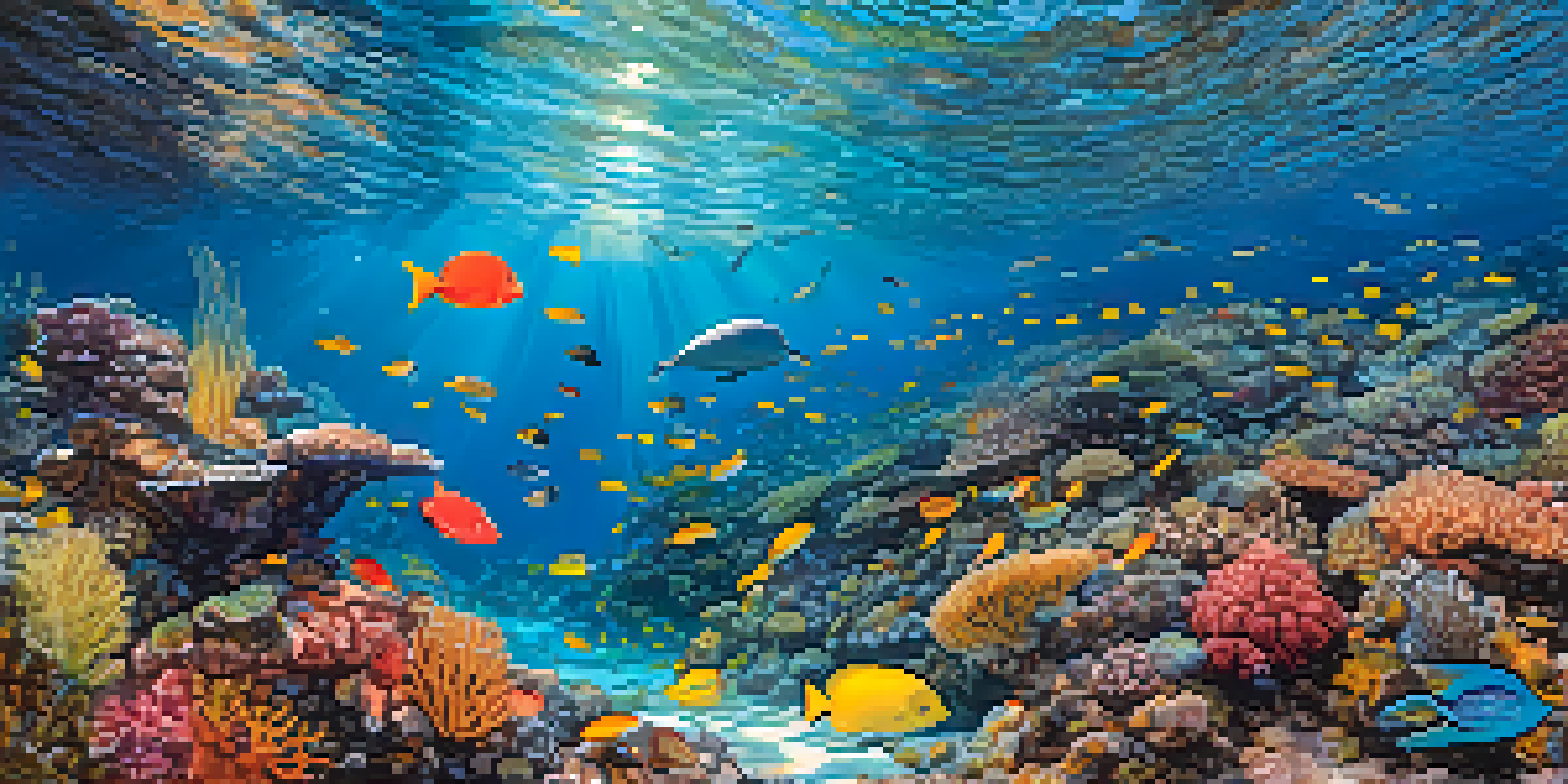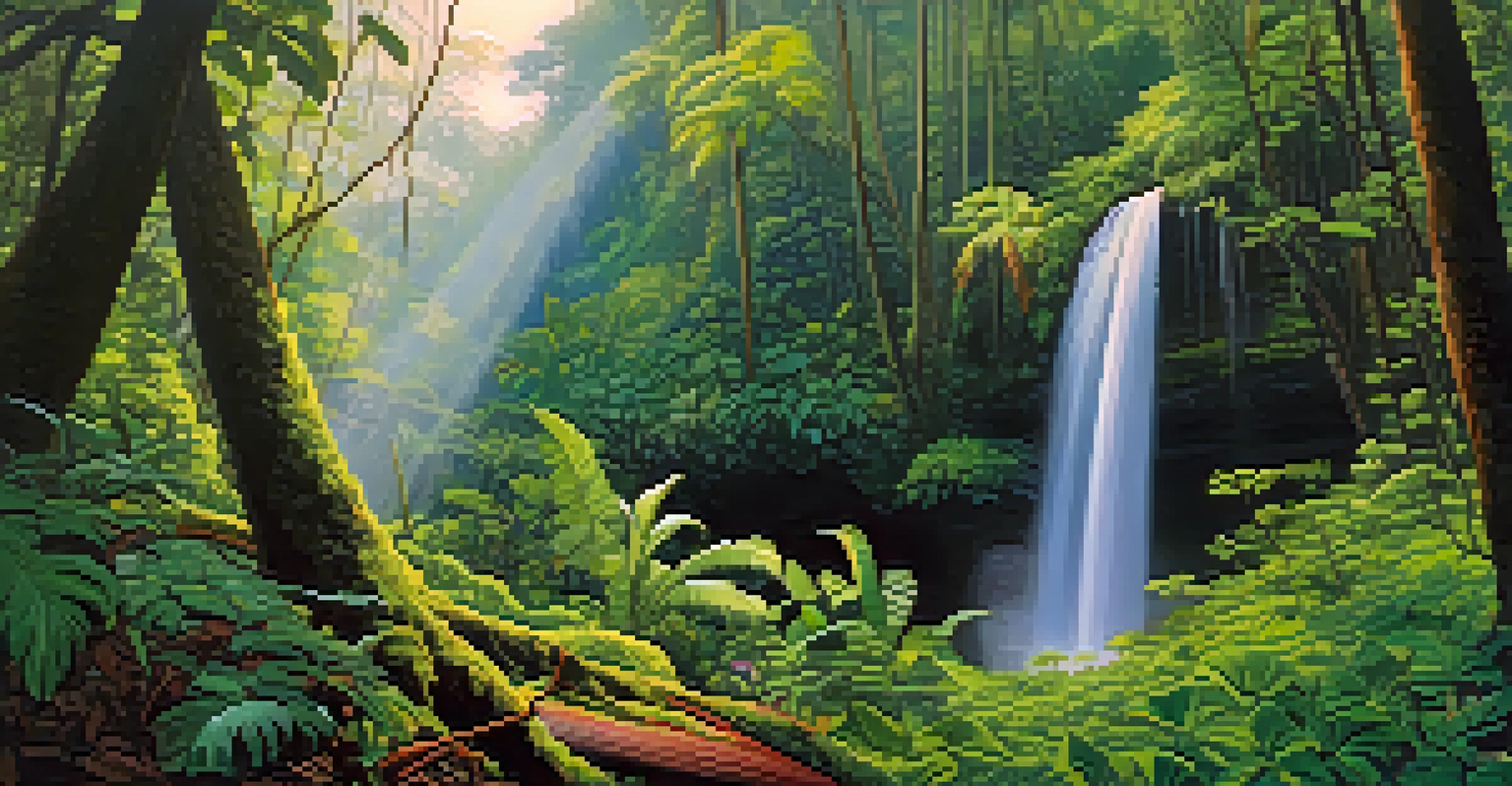Understanding Hawaii's Diverse Ecosystems and Their Significance

Introduction to Hawaii's Unique Ecosystems
Hawaii is renowned for its breathtaking landscapes and rich biodiversity. The islands are home to a variety of ecosystems, each supporting unique forms of life. From lush rainforests to vibrant coral reefs, these environments are not just beautiful; they play a crucial role in maintaining ecological balance.
The greatest threat to our planet is the belief that someone else will save it.
The geographical isolation of Hawaii has led to the evolution of many endemic species, meaning they can only be found in this region. This uniqueness also makes Hawaii a living laboratory for scientists studying evolution and ecology. Understanding these ecosystems helps us appreciate the intricate web of life that sustains them.
Moreover, these ecosystems are critical for the wellbeing of local communities. They provide resources, recreational opportunities, and cultural significance, making their preservation essential for both nature and people.
The Importance of Coral Reefs in Hawaii
Hawaii's coral reefs are some of the most diverse ecosystems on the planet. They serve as crucial habitats for countless marine species and protect shorelines from erosion. Beyond their ecological role, these reefs attract tourists, supporting the local economy through activities like snorkeling and diving.

However, climate change and ocean acidification pose serious threats to these delicate ecosystems. Rising sea temperatures can lead to coral bleaching, a phenomenon that weakens and can even kill corals. Protecting these reefs is not only vital for marine life but also for the livelihoods that depend on them.
Hawaii's Ecosystems are Unique
The islands' geographical isolation has led to the evolution of many endemic species, making Hawaii a vital area for studying biodiversity.
Efforts are underway to restore and protect coral reefs through conservation initiatives and community engagement. By understanding their importance, we can work together to ensure that these underwater treasures thrive for generations to come.
The Role of Rainforests in Biodiversity
Hawaii's rainforests are a treasure trove of biodiversity, housing thousands of plant and animal species. These lush environments are critical for maintaining ecological balance and provide essential services like carbon sequestration and water filtration. The dense canopies also play a role in regulating the local climate.
In every walk with nature one receives far more than he seeks.
Many species found in Hawaii's rainforests are endemic, meaning they evolved uniquely in this environment. This makes the conservation of rainforests not just important for biodiversity but also for preserving Hawaii's natural heritage. Without these ecosystems, we risk losing many species that cannot be found elsewhere.
Additionally, rainforests offer recreational opportunities and serve as sources of inspiration for art and culture. Protecting these ecosystems ensures that future generations can enjoy their beauty and the benefits they provide.
Unique Flora of Hawaii: A Closer Look
Hawaii is home to an astonishing variety of plant life, with around 90% of the native plants found nowhere else on Earth. This incredible diversity is due to the islands' unique geological history and varying climates. Iconic plants like the silversword and native Hawaiian hibiscus are not only beautiful but also essential to the ecosystem.
These plants play vital roles in their habitats, providing food and shelter for many species. Moreover, they contribute to soil health and water retention, enhancing the overall environment. Understanding the significance of these plants helps us appreciate their role in sustaining Hawaii's natural beauty.
Coral Reefs Support Local Economy
Hawaii's coral reefs are crucial for marine life and tourism, but they face threats from climate change that impact both ecology and local livelihoods.
Unfortunately, many native plant species are threatened by invasive species and habitat loss. Conservation efforts are crucial to protect these unique flora and ensure that Hawaii's landscapes remain vibrant and diverse.
Hawaii's Unique Fauna: Protecting Endangered Species
Hawaii is home to numerous endangered species, many of which are unique to the islands. The Hawaiian monk seal and the nene goose are just a few examples of animals that face extinction due to habitat loss and invasive species. Protecting these creatures is vital for maintaining the ecological balance of the islands.
Efforts to conserve these endangered species include habitat restoration and community education programs. By raising awareness about the importance of these animals, we can foster a sense of responsibility towards their protection. Supporting local conservation initiatives can make a significant impact on their survival.
Moreover, the preservation of endangered species contributes to the overall health of ecosystems. Each species plays a role in its habitat, and losing one can have ripple effects throughout the food web.
The Impact of Invasive Species on Hawaii's Ecosystems
Invasive species pose one of the most significant threats to Hawaii's ecosystems. These non-native plants and animals can outcompete, prey on, or bring diseases to native species, disrupting the delicate balance that has developed over millennia. Understanding this impact is critical for effective conservation efforts.
For instance, the introduction of the mongoose has significantly affected the populations of ground-nesting birds in Hawaii. Similarly, invasive plants can choke out native flora, leading to a decline in biodiversity. Efforts to control invasive species are essential to protect Hawaii's unique ecosystems.
Cultural Ties to Natural Resources
Hawaii's ecosystems are deeply tied to local culture and traditions, emphasizing the importance of sustainable practices like 'malama aina.'
By promoting awareness and supporting local initiatives, we can help mitigate the effects of invasive species. Every small action contributes to the preservation of Hawaii's natural heritage, ensuring that future generations can enjoy its beauty.
The Cultural Significance of Hawaii's Ecosystems
Hawaii's ecosystems are deeply intertwined with the culture and traditions of its people. The land and sea have provided sustenance, inspiration, and spiritual connections for generations. Understanding this relationship enhances our appreciation for the natural world and its significance to local communities.
Many traditional practices, such as fishing and farming, are rooted in the sustainable use of these ecosystems. The concept of 'malama aina,' or caring for the land, underscores the importance of environmental stewardship. This cultural perspective emphasizes the need to protect and preserve Hawaii's natural resources for future generations.

By recognizing the cultural significance of these ecosystems, we can foster a deeper respect for the land and its inhabitants. Supporting local initiatives that honor these traditions contributes to a more sustainable future for Hawaii.